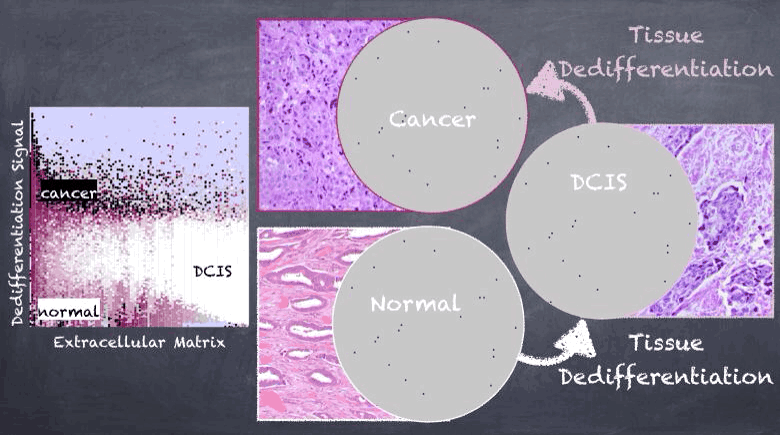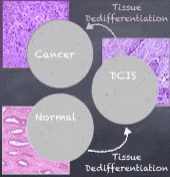 Cancer stem cells are believed to be the sole initiator and driver of tumor growth, given their self-renewal and tissue restoration properties. Their eradication may offer the ultimate in targeted tumor treatment. In this paper we challenge the strict hierarchical view of cancer stem cells and investigate the hypothesis of a plastic, niche-dependent stem phenotype, where the niche dictates the cell’s ability to maintain its stem-like state. We develop a two-dimensional hybrid discrete-continuum cellular automata model to describe the cell scale dynamics of multicellular tissue formation, and its environmental regulation. We find that by allowing cells to gain stem-like properties and also lose this phenotype in a context-driven manner, we can recapitulate a wide spectrum of tumor-like histologies. Varying microenvironmental parameters we show that well-differentiated tissues can be turned into highly dedifferentiated, unstructured ones. Additionally, by introducing mutations that alter a cell’s ability to respond to environmental cues, or to contribute to niche creation, we observe different possible routes of tissue homeostatic disruption. Characterizing the plastic behavior of the stem phenotype in cancer will critically allow us to identify the dynamics that lead to the formation of solid tumors and allow us to design alternative treatment strategies. For more information, please visit our group website.
Cancer stem cells are believed to be the sole initiator and driver of tumor growth, given their self-renewal and tissue restoration properties. Their eradication may offer the ultimate in targeted tumor treatment. In this paper we challenge the strict hierarchical view of cancer stem cells and investigate the hypothesis of a plastic, niche-dependent stem phenotype, where the niche dictates the cell’s ability to maintain its stem-like state. We develop a two-dimensional hybrid discrete-continuum cellular automata model to describe the cell scale dynamics of multicellular tissue formation, and its environmental regulation. We find that by allowing cells to gain stem-like properties and also lose this phenotype in a context-driven manner, we can recapitulate a wide spectrum of tumor-like histologies. Varying microenvironmental parameters we show that well-differentiated tissues can be turned into highly dedifferentiated, unstructured ones. Additionally, by introducing mutations that alter a cell’s ability to respond to environmental cues, or to contribute to niche creation, we observe different possible routes of tissue homeostatic disruption. Characterizing the plastic behavior of the stem phenotype in cancer will critically allow us to identify the dynamics that lead to the formation of solid tumors and allow us to design alternative treatment strategies. For more information, please visit our group website.
Keywords: Tumor microenvironment, cancer stem cells (CSC), ductal carcinoma in situ (DCIS), hybrid discret-contnuum (HDC) cellular automata, niche, plasticity, stemness

